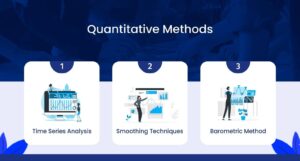What is the best and most common data collection?

The most common way to collect primary data is through surveys and interviews. Surveying is the process of collecting data through a questionnaire that asks a range of individuals the same questions related to their characteristics, attributes, how they live or their opinions.
The most common way to collect primary data is through surveys and interviews. Surveying is the process of collecting data through a questionnaire that asks a range of individuals the same questions related to their characteristics, attributes, how they live or their opinions. Interviewing, on the other hand, involves researchers seeking open-ended answers related to a number of questions, topic areas or themes.
These methods put you, as the researcher, in charge. Not only do you get to ask what you want, when you want, you also get to ask it how you want – you get to choose the wording, the order, the prompts, the probes.
Observation studies, a systematic method of data collection that relies on a researcher’s ability to gather data through his or her senses, are similar in that you set up the protocols for data collection – you decide what you will observe, when you will observe it, what you will record as ‘data’. In all three approaches, data collection is directed with some precision towards your research question, hypothesis, aims and objectives, and this has real appeal. The data collected is not superfluous but is, in fact, custom-built for your research project.
But there are some challenges associated with the collection of primary data. For one, it is a lot of work. Whether it be surveys, interviews or observation studies, it is not easy to design your own research protocols. Survey instruments are notoriously difficult to get right. Getting through a series of interviews and thoughtfully analysing them can be an exercise in frustration. And observation studies can be complex and leave you with a pile of messy data. There are also a host of ethical issues that you will need to work through to ensure you do no harm to your respondents though your research processes.
Primary data collection is also time-consuming, often expensive and doesn’t always go to plan. Getting enough survey respondents within your timeframe, racing around different parts of the city or state to conduct an interview, and the prolonged engagement that observation sometimes demands – all those need to be factored into the research design decision-making process.
If you can overcome these challenges, however, there can be great rewards. You have data expressly generated for your own research purposes, which can give you insights not available if you had used a pre-existing data set.

Data is a collection of facts, figures, objects, symbols, and events gathered from different sources. Organizations collect data with various data collection methods to make better decisions. Without data, it would be difficult for organizations to make appropriate decisions, so data is collected from different audiences at various points in time.
For instance, an organization must collect data on product demand, customer preferences, and competitors before launching a new product. If data is not collected beforehand, the organization’s newly launched product may fail for many reasons, such as less demand and inability to meet customer needs.
Although data is a valuable asset for every organization, it does not serve any purpose until analyzed or processed to get the desired results.
What are Data Collection Methods?
Data collection methods are techniques and procedures used to gather information for research purposes. These methods can range from simple self-reported surveys to more complex experiments and can involve either quantitative or qualitative approaches to data gathering.
Some common data collection methods include surveys, interviews, observations, focus groups, experiments, and secondary data analysis. The data collected through these methods can then be analyzed and used to support or refute research hypotheses and draw conclusions about the study’s subject matter.
Importance of Data Collection Methods
Data collection methods play a crucial role in the research process as they determine the quality and accuracy of the data collected. Here are some mejor importance of data collection methods.
- Determines the quality and accuracy of collected data.
- Ensures that the data is relevant, valid, and reliable.
- Helps reduce bias and increase the representativeness of the sample.
- Essential for making informed decisions and accurate conclusions.
- Facilitates achievement of research objectives by providing accurate data.
- Supports the validity and reliability of research findings.
The importance of data collection methods cannot be overstated, as it plays a key role in the overall success and internal validity of the research study.
Types of Data Collection Methods
The choice of data collection method depends on the research question being addressed, the type of data needed, and the resources and time available. You can categorize data collection methods into primary methods of data collection and secondary methods of data collection.
Primary Data Collection Methods
Primary data is collected from first-hand experience and is not used in the past. The data gathered by primary data collection methods are specific to the research’s motive and highly accurate.
Primary data collection methods can be divided into two categories: quantitative methods and qualitative methods.
Quantitative Methods:
Quantitative techniques for market research and demand forecasting usually use statistical tools. In these techniques, demand is forecasted based on historical data. These methods of primary data collection are generally used to make long-term forecasts. Statistical analysis methods are highly reliable as subjectivity is minimal in these methods.

Time Series Analysis: The term time series refers to a sequential order of values of a variable, known as a trend, at equal time intervals. Using patterns, an organization can predict the demand for its products and services for the projected time.
Smoothing Techniques: In cases where the time series lacks significant trends, smoothing techniques can be used. They eliminate a random variation from the historical demand. It helps in identifying patterns and demand levels to estimate future demand. The most common methods used in smoothing demand forecasting techniques are the simple moving average method and the weighted moving average method.
Barometric Method: Also known as the leading indicators approach, researchers use this method to speculate future trends based on current developments. When the past events are considered to predict future events, they act as leading indicators.
Qualitative Methods:
Qualitative data collection methods are especially useful in situations when historical data is not available. Or there is no need of numbers or mathematical calculations.
Qualitative research is closely associated with words, sounds, feeling, emotions, colors, and other elements that are non-quantifiable. These techniques are based on experience, judgment, intuition, conjecture, emotion, etc.
Quantitative methods do not provide the motive behind participants’ responses, often don’t reach underrepresented populations, and span long periods to collect the data. Hence, it is best to combine quantitative methods with qualitative methods.
Surveys: Surveys are used to collect data from the target audience and gather insights into their preferences, opinions, choices, and feedback related to their products and services. Most survey software often has a wide range of question types to select.
You can also use a ready-made survey template to save time and effort. Online surveys can be customized as per the business’s brand by changing the theme, logo, etc. They can be distributed through several distribution channels such as email, website, offline app, QR code, social media, etc. Depending on the type and source of your audience, you can select the channel.
Once the data is collected, survey software can generate various reports and run analytics algorithms to discover hidden insights. A survey dashboard can give you statistics related to response rate, completion rate, filters based on demographics, export and sharing options, etc. Integrating survey builder with third-party apps can maximize the effort spent on online real-time data collection. Practical business intelligence relies on the synergy between analytics and reporting, where analytics uncovers valuable insights, and reporting communicates these findings to stakeholders.
Polls: Polls comprise one single or multiple-choice question. You can go for polls when it is required to have a quick pulse of the audience’s sentiments. Because they are short in length, it is easier to get responses from people.
Like surveys, online polls can also be embedded into various platforms. Once the respondents answer the question, they can also be shown how they stand compared to others’ responses.
Interviews: In this method, the interviewer asks the respondents face-to-face or by telephone. In face-to-face interviews, the interviewer asks a series of questions to the interviewee in person and notes down responses. If it is not feasible to meet the person, the interviewer can go for a telephone interview. This form of data collection is suitable for only a few respondents. It is too time-consuming and tedious to repeat the same process if there are many participants.
Delphi Technique: In delphi method, market experts are provided with the estimates and assumptions of forecasts made by other experts in the industry. Experts may reconsider and revise their estimates and assumptions based on the information provided by other experts. The consensus of all experts on demand forecasts constitutes the final demand forecast.
Focus Groups: A focus group is one of the examples of qualitative data in education. In a focus group, a small group of people, around 8-10 members, discuss the common areas of the research problem. Each individual provides his or her insights on the issue concerned. A moderator regulates the discussion among the group members. At the end of the discussion, the group reaches a consensus.
Questionnaire: A questionnaire is a printed set of questions, either open-ended or closed-ended. The respondents must answer based on their knowledge and experience with the issue. The questionnaire is a part of the survey, whereas the questionnaire’s end goal may or may not be a survey.